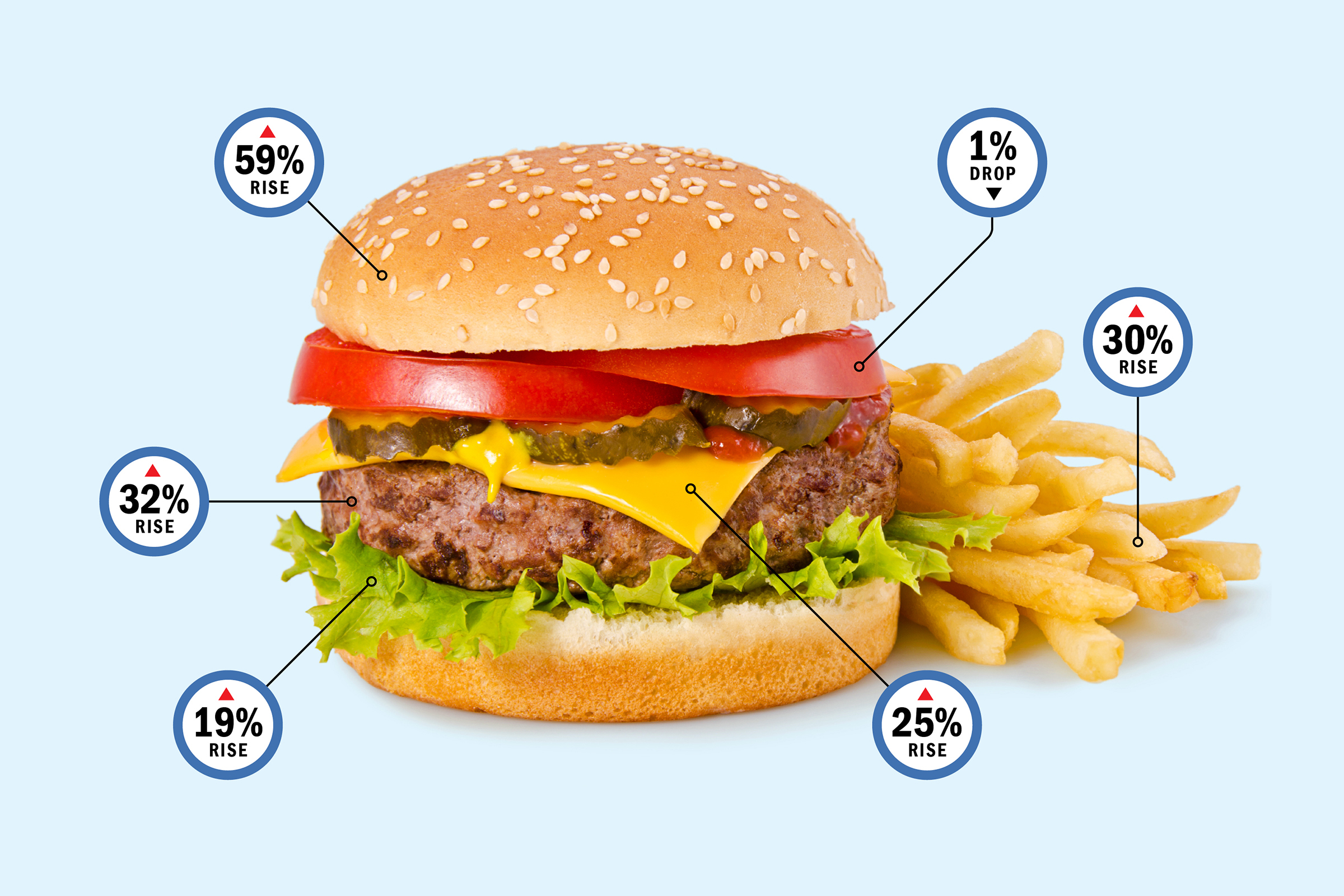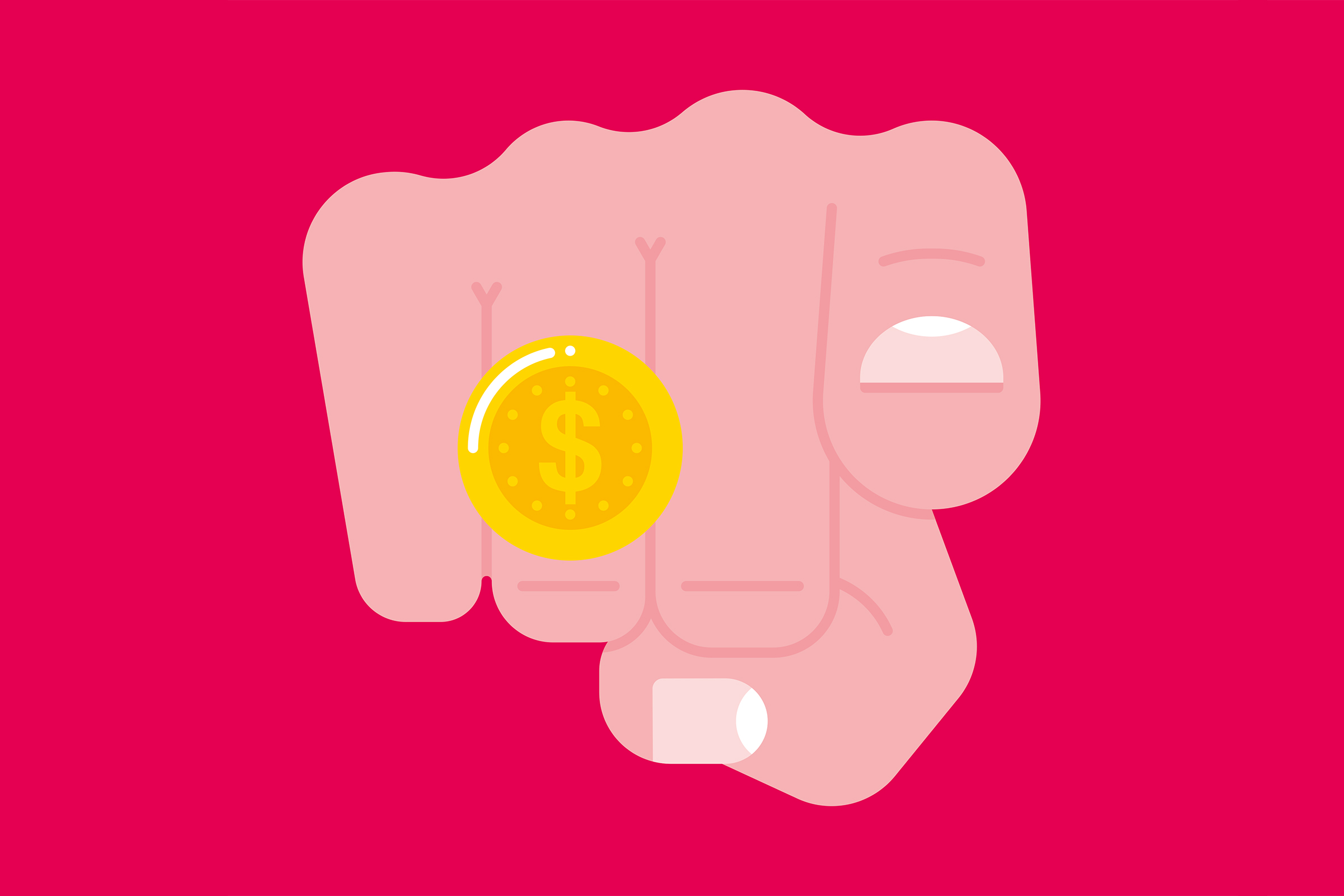
This article is part of The D.C. Brief, TIME’s politics newsletter. Sign up here to get stories like this sent to your inbox.
When the Supreme Court overturned Roe v. Wade two years ago, Kelley Robinson was running the political shop at Planned Parenthood. Like so many abortion advocates and activists, she had seen the moment looming insidiously for so long. Even still, its arrival felt like both a personal and professional thwacking. It was a moment meriting despondency, but even taking the time for that seemed like an indulgence.
[time-brightcove not-tgx=”true”]
“Up until Roe was overturned—even after the leak that they planned to overturn Roe came out—we polled folks across the country and they still did not believe it was true,” Robinson tells me. “They just would not believe that the Supreme Court in our lifetime would actually overturn such a fundamental right that had been the law of the land for over 40 years.”
Robinson is now president of the Human Rights Campaign, the nation’s largest LGBTQ civil rights organization, and fears she’s watching the same slow-moving car crash all over again. The most glaring sign of many came about on the day Roe fell.
“In Clarence Thomas’ dissent, he says the quiet part out loud: next they are coming for Windsor and Obergefell and Lawrence,” she says, citing three rulings that unlocked a national right to same-sex marriage.
Put another way: the foundational underpinning of LGBTQ rights is up there on conservatives’ list of targets, and they’re not exactly announcing it in a whisper.
Before 2015, whether a same-sex couple could marry varied by state. With its 5-4 decision in Obergefell v. Hodges, the Supreme Court extended the federal right to marry to same-sex couples. It was a reflection of how much the country’s views of same-sex relationships had already shifted, and would continue to do so in the years that followed. But while the polls have moved one way, the composition of the Court has shifted in the other direction. If Roe could fall after 49 years in a 6-3 ruling in the Dobbs v. Jackson case, there’s no reason to think Obergefell is any safer after less than a decade in action.
It’s the legal earthquake that people like the lawyers at the Human Rights Campaign’s headquarters in Dupont Circle argue could come as soon as next year. Yet even some of those who worked for years to help secure a right now enjoyed by hundreds of thousands of couples refuse to believe it could be taken away. Same-sex marriage, they argue, is too popular, too engrained and accepted in American society. The Court wouldn’t dare.
Or would they? A clear-eyed examination of the political and legal landscape makes it impossible to dismiss out of hand. The threats are as real now to Obergefell as they were to Roe, whose durability was largely taken as an article of faith until it was too late. The legal breadcrumbs are not difficult to find for those looking hard enough. Justice Samuel Alito in particular has been sprinkling swipes at Obergefell in concurrences and dissents since 2020. And then there are the smattering of cases—mostly to do with trans rights—working their way through courts in red states. Any one of those reaching the nation’s highest court could give the 6-3 conservative majority a chance to undermine Obergefell, or wipe it out entirely, and with it, the other rulings that cite it as precedent. And it must be noted: only two Justices who voted in favor of Obergefell remain on the bench—Sonia Sotomayor and Elena Kagan.
Here, you may be hitting a bump. Didn’t Congress fix this? They’d like to think so. But there are enormous shortcomings in the 2022 Respect For Marriage Act that ordered states to respect marriage licenses, adoption orders, and divorce decrees issued in other states. It also gave a buffer to earlier rulings that allowed interracial couples to wed.
But it did not codify Obergefell. Instead, it scrapped the 1996 Defense of Marriage Act, which would have snapped back into effect if the Court were to spike Obergefell. The law has so many loopholes that even the conservative Mormon church endorsed it, as its leaders understood that it might someday empower states like Utah, which roughly 133,000 LGBT residents call home, to tell gay couples to go elsewhere to get a marriage license.
“People think that marriage equality is a fait accompli,” says Rebecca Buckwalter-Poza, a former spokeswoman for the Democratic National Committee and Yale Law graduate who is on the board of LPAC, which raises money to help lesbians and their allies win elections. “They think that not just because of Obergefell but because of the Respect for Marriage Act. They’re wrong—dangerously wrong.”
If the red-blue divide in this country that emerged for abortion rights is any guide, we would likely to see a similar geographical split on access to same-sex marriage in a post-Obergefell legal environment. But that would just be the start. Many Republican-controlled states would likely take steps to not just ditch marriage licenses for same-sex couples, but also ignore scores of anti-discrimination rules and regulations that federal agencies promulgated based on rights some say are justified through Obergefell. The ripple effects would be massive and, for potentially millions of members of the LGBTQ community, heart-wrenching.
It’s why Robinson is among those pushing Democrats to make the case more forcefully that same-sex marriage, and LGBTQ rights more broadly, are on the ballot just as much as abortion.
“What we are seeing is similar to what we saw in the abortion fight, right?” says Robinson. “They didn’t go after Roe first. They came at us with death by a thousand cuts, but always with the same goal of undermining abortion access. That’s what’s happening here.”

Here, it’s worth another pause and a reminder. Public opinion—and law—has changed so rapidly during the last decade on LGBTQ rights that it can be easy to forget that the legal scaffolding upholding much of it is disturbingly fragile. The big breakthrough came in a 2013 ruling about inheritance laws, United States v. Windsor. Later that year came Hollingsworth v. Perry and Prop 8, which restored same-sex marriage in California, yielding a neck-breaking Obergefell in 2015. It was a joyous march for LGBTQ community and their allies, but activists were warning me only months later to not be fooled into thinking a Golden Age of Gay had arrived.
They were right. Onward came the Bathroom Bills. And bans on transgender athletes. And potential child-separation laws in places like Texas that allow the state to take trans children away from their parents. For those who may think trans rights are a separate issue from broadly accepted gay rights like same-sex marriage, you are missing how nearly all of these rights are anchored on an LBGTQ-inclusive reading of the 14th Amendment’s provision that says all Americans have the same protections. For most of the current era, race and sex were considered parts of an American’s identity, while their sexuality and gender identity were not.
To be sure, it’s not clear if the votes are there at the moment to end the constitutional right to same-sex marriage. But at least two Justices, Alito and Thomas, appear to be itching to overturn Obergefell. And it’s immensely clear that they are fairly immune to public opinion, political pressure, or demographics.
In 2020, when presented an appeal from a Kentucky county clerk who refused to issue marriage licenses to same-sex couples after Obergefell, the duo said that the case record wasn’t the best version of a precedent-reversing action and indicated that they’d wait for a better one. “Until then, Obergefell will continue to have ruinous consequences for religious liberty,” Alito and Thomas wrote.
A year later, a unanimous Supreme Court ruled that Philadelphia’s Catholic Social Services could refuse to work with same-sex couples on foster care in defiance of the city’s non-discrimination laws. But Alito issued a concurring opinion arguing for a deeper review of precedent that does not require states to set aside laws to accommodate religious beliefs. Alito has long argued that religious beliefs can trump civil laws. “As long as it remains on the books, it threatens a fundamental freedom,” Alito wrote in the Philadelphia case.
All of which has LGBTQ court-watchers nervous on any number of cases that are winding—albeit some more slowly than others—toward Washington.
“The distillation of the crisis we face to whether Obergefell falls is apt and, in a way, an inversion of a familiar problem: the conflation of marriage equality with what it takes to protect LGBTQ+ people in day-to-day life,” says Buckwalter-Poza. “We didn’t win civil rights for queer and trans folks across the board just by winning Obergefell, but we absolutely do stand to lose everything if we lose Obergefell.”
No massive, sweeping anti-LGBTQ case is in the offing this term, which ends this summer, according to those who are tracking every utterance from the Court. But narrower ones are inching forward and could be consequential.
The most proximate seems to be a case coming out of Tennessee, where the state passed a ban on doctors providing gender-affirming surgeries, administrating puberty blocking drugs or prescribing hormone therapies on minors. A Memphis doctor and three families are trying to keep the minors enrolled in treatment that could be ordered to be ended by March 31. An appeals court upheld the state’s case against the trans teens; the Supreme Court hasn’t decided if it would join this state-by-state anti-transcare bingo landscape.
Other cases potentially coming from Florida and Utah stem from public-accommodation needs, including school bathrooms and locker rooms. (Such laws require visitors of certain public buildings use facilities that match the gender on birth certificates that were issued before the families left the hospitals.)
But federal judges in Richmond, Va. seemed sympathetic last year to a transgender girl from West Virginia looking to compete on the girls’ track team in her middle school, but blocked by state law. (The court has yet to rule on the case.)
And much of Washington is awaiting a potential Title IX case that more than a dozen Republican attorneys general are bringing against the Education Department’s proposal that simultaneously goes too far and not far enough in protecting transgender student athletes. Those AGs say the proposal—which would allow schools and colleges to define sport-by-sport rules for athletes—guts the very core of Title IX, which is best known for boosting opportunities for women to participate in college sports. LGBTQ lawyers, meanwhile, maintain that the framework creates an unequal system, where some team buses will be inclusive and others will be allowed to be harbors of anti-trans rhetoric.
Not everyone is convinced that this legal environment means Obergefell is at risk.
“It’s very easy to see where one or two votes would come from on the Court for this based on Thomas’ opinions and Alito’s,” says Sasha Issenberg, a journalist whose study of same-sex marriage politics and law, The Engagement, is a must-read volume about the era. “Showing me where the third, fourth, or fifth vote is becomes very difficult with this Court.”
Yet even a skeptic like Issenberg agrees that the concern isn’t completely unfounded.
“The fact is there are a lot of other terrible things that Republicans are doing to members of the LGBTQ community now, and you don’t have to reach that far for speculative stuff,” he says.

For Robinson, this is all feeling awfully familiar. She spent a good part of her career fighting liberal complacency about the sturdiness of a popular constitutional right, only to see the Dobbs decision burn it to the ground.
She and many of her colleagues watched as the groundwork was being laid decades earlier with President George W. Bush’s addition of John Roberts and Samuel Alito to the Supreme Court. Those were no accidental nominees, but the building blocks to eventually overturning Roe. And Bush was hardly alone in his Republican Party. Even someone seen as a moderate maverick like Sen. John McCain, the GOP’s presidential nominee in 2008, made no secret of his desire to nominate Justices who had already ruled favorably toward abortion limits.
Yet so comfortable were Democrats with Roe’s resiliency that they did not panic when, just five months into his presidency, Barack Obama went to Notre Dame to deliver a commencement address that spoke of working to reduce the number of abortions in the nation. Throughout his eight years in office, Obama’s faith-based advisers spent considerable time looking for areas of mutual agreement, only to find zero-sum partisanship motivated voters more than compromise.
In 2016, Donald Trump did little to conceal his overt pandering to the anti-abortion rights crowd. His defeat over Hillary Clinton came about in part because the majority of Americans who supported access to abortion didn’t believe Roe could ever be overturned.
Nonetheless, there were still plenty of abortion rights supporters concerned about restrictions being pushed in statehouses and in Congress to fuel a massive expansion of Planned Parenthood footprint in the political space. Robinson witnessed the group’s supporter roster grow from 6.5 million to 18 million during her on-and-off, decade-long tenure at the group’s political arm.
Like 2016, the 2020 presidential campaign never hinged on abortion. The economy drew the most important billing for 35% of Americans and 20% cited racial inequality. Still, Robinson helmed a $45 million electoral machine for Planned Parenthood Action Fund that year.
Then came Dobbs, and what had been an afterthought in 2008—abortion access—rocketed in 2022 to being second only to inflation as a deciding factor in people’s vote. A full 27% of all voters pointed to abortion as their top deciding factor, and Democrats were about three-times as motivated on the issue than Republicans.
For decades, presidential candidates often spoke about the Supreme Court in the context of Roe. Now Obergefell might be a better barometer. Even if a majority of justices aren’t ready to rule that same-sex marriage is no longer protected under the 14th amendment, whoever is sitting in the Oval Office over the next four years could find themselves replacing enough members to shift that dynamic fairly quickly.
Yet strategists in both parties have advised campaigns against elevating LGBTQ rights too highly on their agenda, saying abortion is the more animating tool, both for activists and donors.
That kind of thinking ignores how many voters have a vested interest in preserving Obergefell and other LGBTQ gains. New data released Wednesday from Gallup shows 7.6% of Americans identify as LGBTQ—twice the level as when Gallup first asked the question in 2012. Among GenZ—folks who were ages 18 to 26 when reached by Gallup—that number is 22.3%. And Millennials in the next grouping above them and up to age 42, the figure stands at 9.8%.
Put another way, one-third of LGBTQ Americans are under the age of 43 and stand to be voting for many, many elections to come.
On top of this, an average of 2,200 LGBTQ individuals turn 18 every single day.
President Joe Biden clearly gets it. As he addressed a packed lawn of Washington’s LGBTQ insiders gathered in December of 2022 to watch him sign the Respect For Marriage Act, he drew a direct line from Roe to Obergefell.
“An extreme Supreme Court has stripped away the right important to millions of Americans that existed for half a century. [With] the Dobbs decision, the Court’s extreme conservative majority overturned Roe v. Wade and the right to choose,” Biden said, specifically noting Thomas’ opinion that cited precedent on contraception, sexual conduct, and marriage. Biden’s re-election campaign has made the Court’s move on abortion central to his pitch to on-the-fence voters, and he often adds in an occasional reference to LGBTQ rights for good measure. He specifically made a nod to transgender rights in his State of the Union last week: “I have your back.”
For his part, Trump has been more vague when it comes to LGBTQ rights. At his 2016 nominating convention, billionaire Peter Thiel became the first openly gay speaker at a GOP convention to acknowledge their sexual orientation. But as President, Trump also put in place three Supreme Court Justices—among the 234 federal judges confirmed on his watch—who have been transparently hostile to LGBTQ rights. A Trump campaign spokesman did not return a query about the former President’s position these days.
While the fall of Roe is reality, and Obergefell’s remains theoretical, both issues warrant better attention by the candidates and voters. “This isn’t just some sort of fantasy. This could actually be our reality unless we do something,” says Robinson. “It’s why 2024 matters so much.”
Make sense of what matters in Washington. Sign up for the D.C. Brief newsletter.
The post The Fight for Same-Sex Marriage Isn’t Over. Far From It. first appeared on The News And Times.





